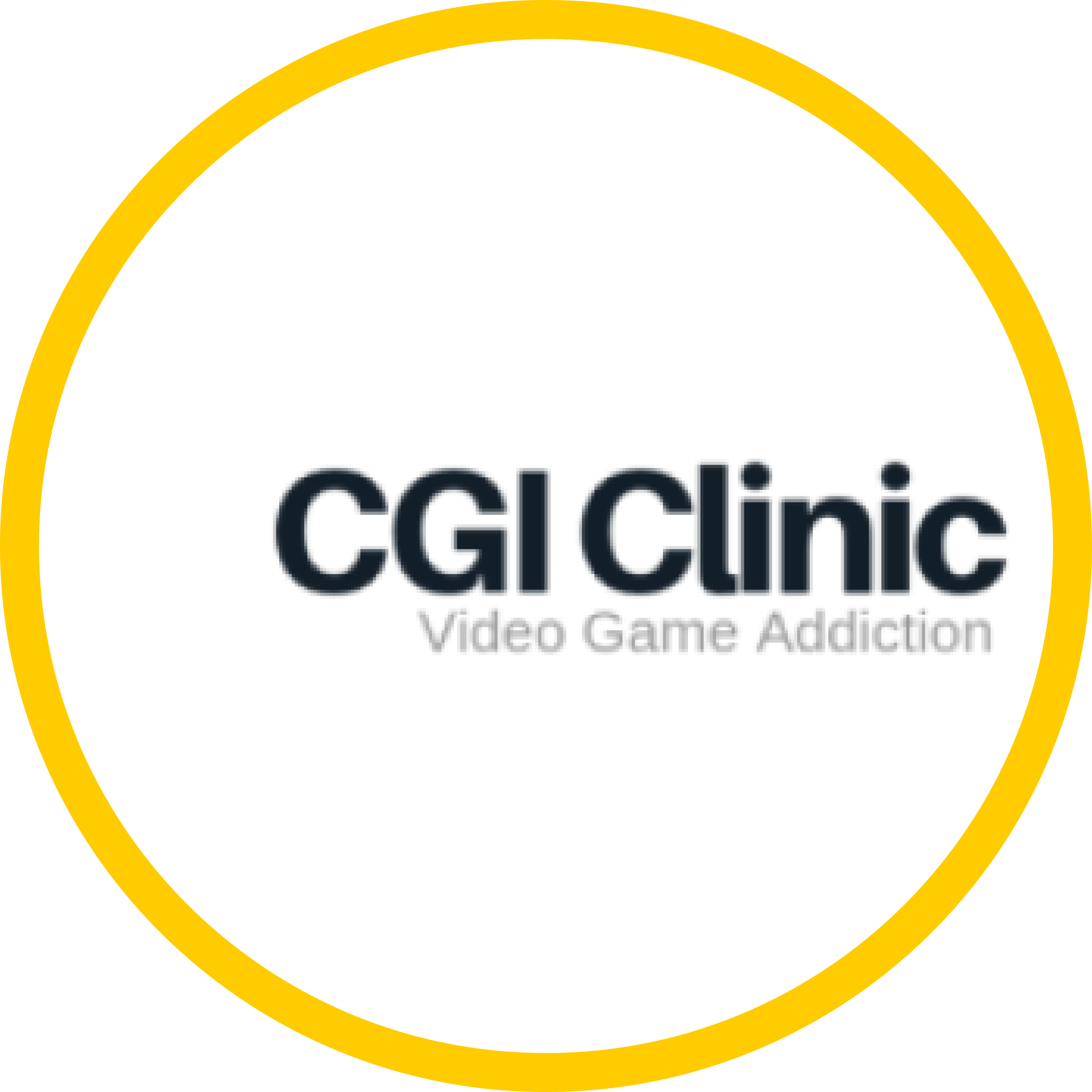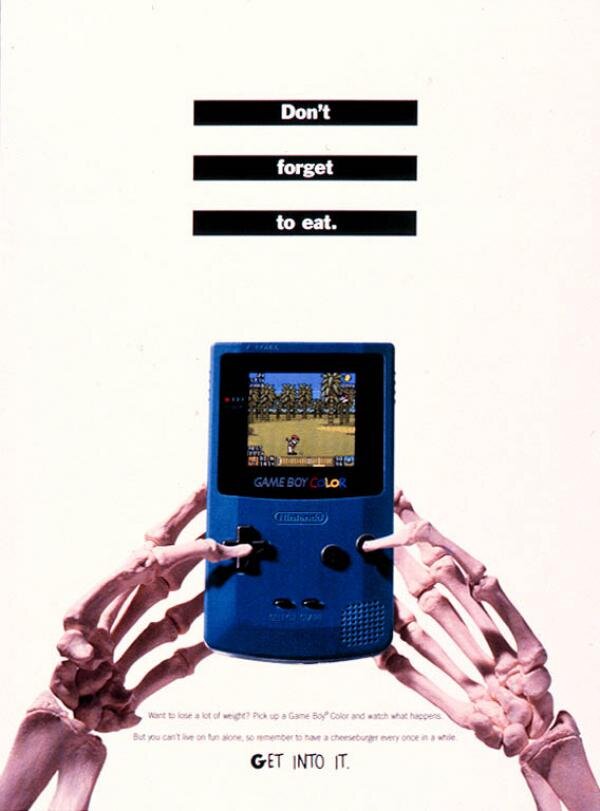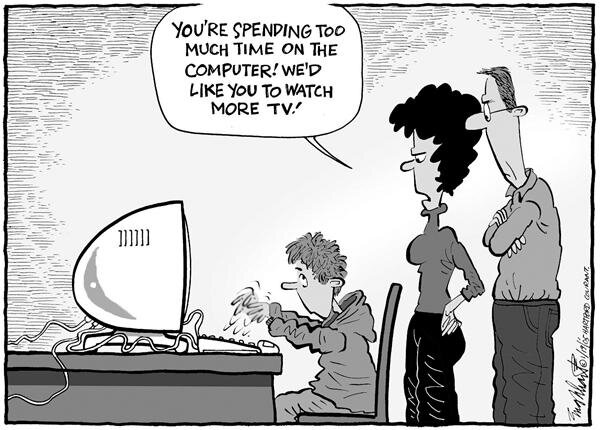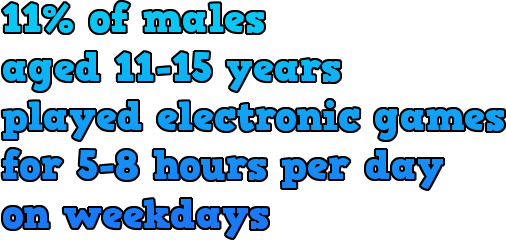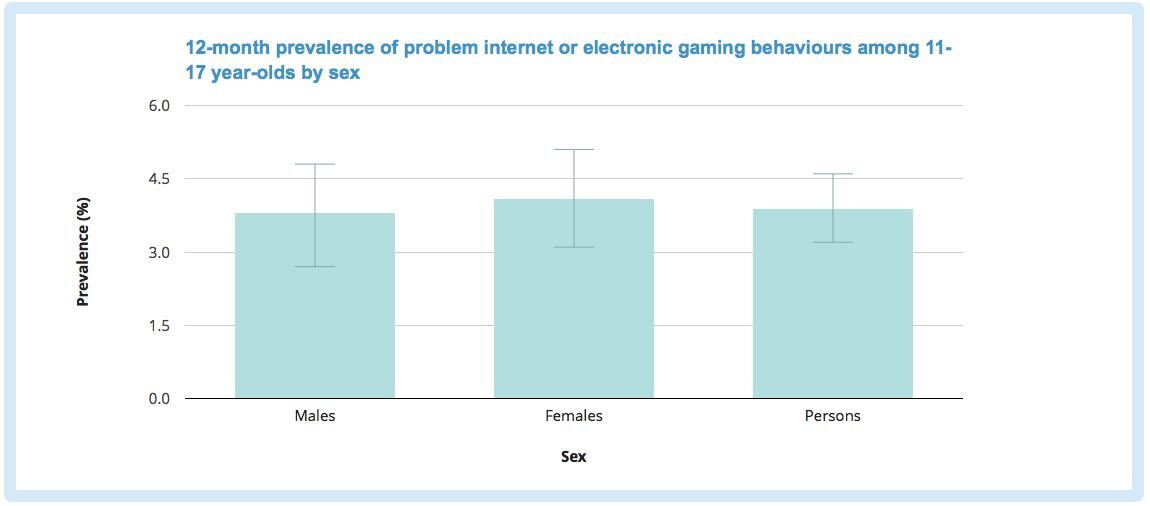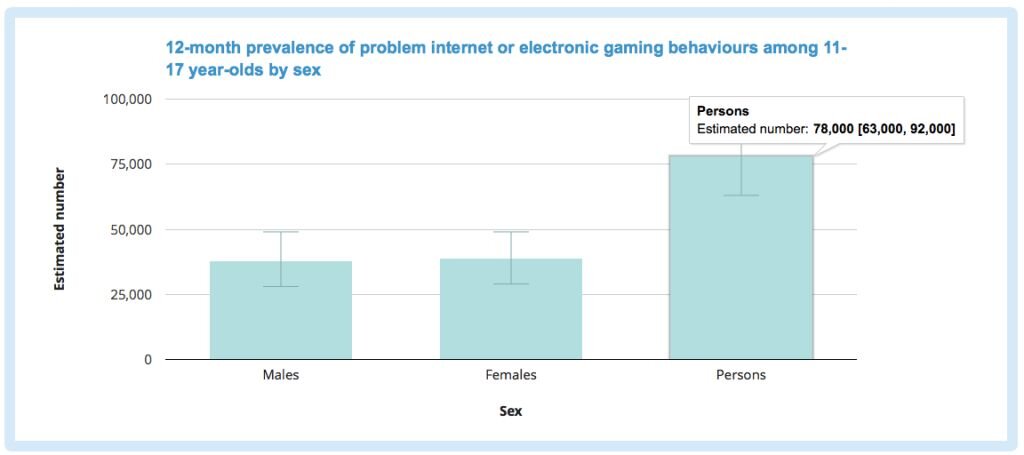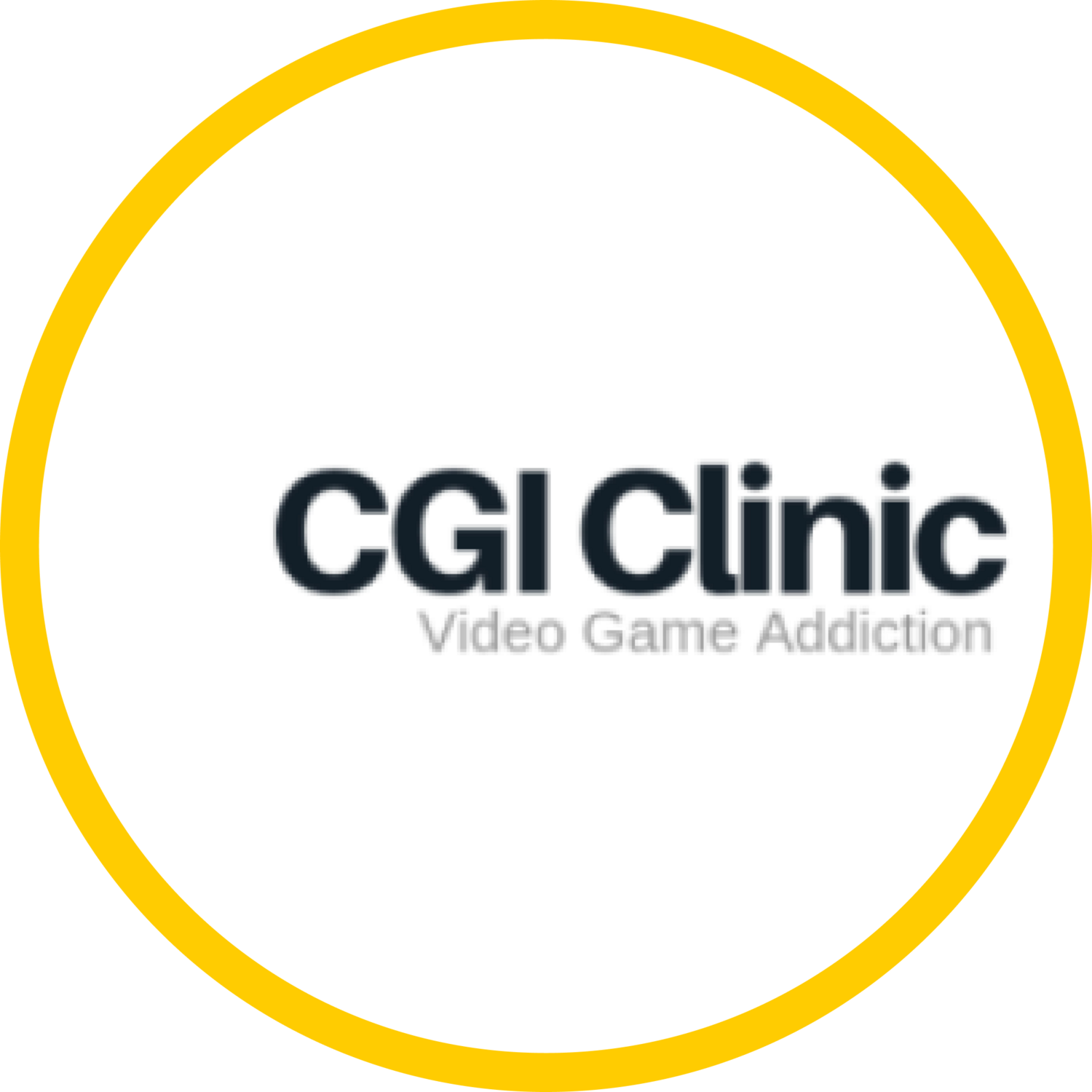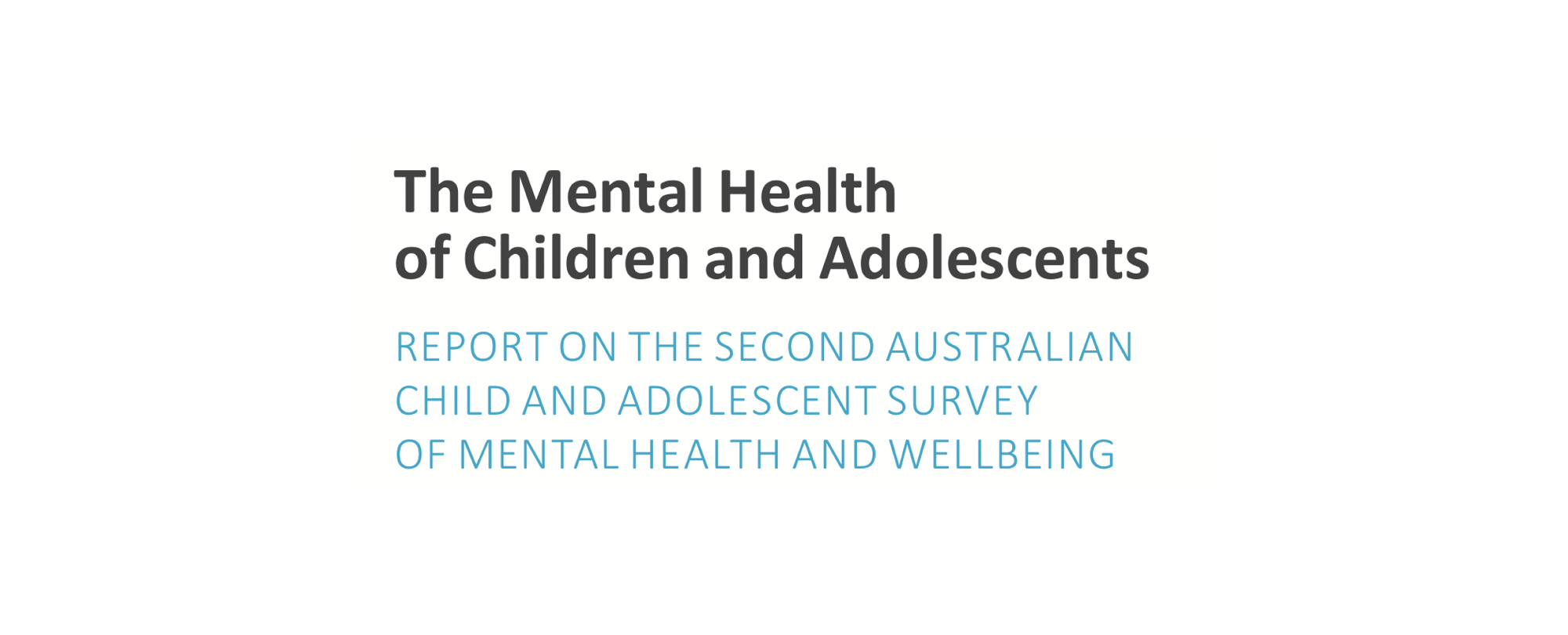
Dr Le
Articles
Up-to-date data on Australian adolescents' Internet use and electronic gaming is a much needed insight for future health research, policy and service development.
CGI Clinic met this week with Dr Titia Sprague (Associate Director Clinical Policy and Service Development MH-Kids, New South Wales Ministry of Health) who was on the survey reference group for this Australian Government Department of Health Report (1). This CGI Clinic commentary is based on the following section:
"Most important" finding according to CGI Clinic:
Breakdown of this section of the report:
- Method: Self-report questionnaire (separate to the family interview/survey)
- Dates: Conducted between 2013-2014, published August 2015
- Number: 3000 adolescents from 6000 families
- Ages: Adolescents aged 11-17 years
- Country: Australia
- Scales used:
- This survey developed their own "indicators of potential addictive behaviours" to describe problem internet or electronic gaming behaviour. This is not the same as the DSM-5 Internet Gaming Disorder which was probably released just after this survey was conducted (DSM-4 criteria was used for all other major mental disorders) (2).
- "Indicators of potential addictive behaviours": If an adolescent reported at least 4 out of the following 5, this was indicative of problematic use. The report used the following "indicators" (possible behavioural addiction domains in brackets):
"Don't forget to eat" - Nintendo
- Went without eating or sleeping (salience)
- Feel bothered when not doing (psychological withdrawal symptoms)
- Use when not really interested (possible tolerance, loss of control, lose interest in hobbies, use despite psychosocial problems)
- Spent less time than should with family or friends, doing school work or work (jeopardised relationships/educational opportunities)
- Tried unsuccessfully to spend less time (unsuccessful attempts to control)
Limitations of the questionnaire: As this is the first major national government survey looking into adolescent problematic Internet and Electronic Gaming use, it is expected that there will be many weaknesses. It highlights not only the speed of technology and cultural advancement, but the need for more understanding and awareness of these behaviours. 



"feel bothered when not doing"
and
"use when not really interested"
The question of feeling bothered is an attempt at addressing psychological withdrawal, but it is not specific enough to attempts to cut down or stop gaming. This could be interpreted as feeling bothered when a parent asks the teenager to end a current gaming session. The question of "use when not really interested" is also not specific enough. It is an attempt to address tolerance, loss of control, less interest in other hobbies and use despite psychosocial problems, all in one question.
This question could also be interpreted as using when bored, to pass the time or avoidance of less fun activities. Using the Internet or playing games may not always be fun, but it is probably more fun than homework or chores. Because both questions are not specific enough they may lead to a bias towards problematic use.
Not interested but still more fun than homework.
Lastly, the questionnaire did not adequately address use for mood modification, escape or other motivations. This would have been very useful to link with the very important finding of increased problem gaming in teenagers with major depressive disorder.
Strengths of the questionnaire: There was a large number of teenage respondents sampled (3000 in total), the biggest and most up to date of its kind from Australia. By combining this with questions regarding other mental health disorders they were able to make some strong links with other mental disorder comorbidities such as major depressive disorder.
"13.0% of young people with major depressive disorder identified through the adolescent self-report questionnaire reported four of five of these problem behaviours"
-The Mental Health of Children and Adolescents (2015)
This supports the findings from the Singapore study that the more time spent playing video games increased depressive symptoms and a decreased in playing decreased depressive symptoms.
What were their other main findings?
Remember this is per day on a weekday.
Computer Time by Bob Englehart
Use was similar on the weekend (25.9%, 23.7% and 12.1%). The core feature of a behavioural addiction like Internet Gaming Disorder is a lack of control over the activity (with the cost being time). Although the amount of time spent in itself is not diagnostic it should be concerning that young people can spend this much time online.
An interesting finding is that although females did not spend as much time on electronic games, they reported a higher prevalence of problem Internet or electronic gaming behaviour compared to males as described here in the following chart.
In addition, from this data there is an estimated 78,000 Australian adolescents with problem Internet use and electronic gaming:
What can we learn from this?
This is a much needed initiative and acknowledgment from the Australian Government that the mental health of young people matter. The link between problem use of digital technology and mental health is evidence that more research, policy and service development is required. The need to address a wide range of mental disorders in the questionnaire led to many limitations of the Internet and gaming data. A more comprehensive and specific questionnaire on the effects of digital technology is required to meet the needs of the Australian community. More needs to be done to reduce the social, educational and psychological impact of an estimated 78,000 Australian adolescents with problem use of digital technology. If this problem is not addressed, then this will have a major flow on effect on the wider society. The public needs more awareness into the possible negative effects and services to meet the needs of our community.
You can find a copy of the report here: http://www.health.gov.au/internet/main/publishing.nsf/Content/mental-pubs-m-child2
A complementary interactive website created by the authors for the report can be found here: http://youngmindsmatter.org.au/
Use of charts, tables and data from this report is for transformative and educational purposes only. The report is copyrighted by the Commonwealth of Australia 2015.
References:
- Lawrence D, Johnson S, Hafekost J, Boterhoven De Haan K, Sawyer M, Ainley J, Zubrick SR (2015) The Mental Health of Children and Adolescents. Report on the second Australian Child and Adolescent Survey of Mental Health and Wellbeing. Department of Health, Canberra.
- DSM-5 American Psychiatric Association. (2013). Diagnostic and statistical manual of mental disorders. Arlington: American Psychiatric Publishing.
- https://drmarkgriffiths.wordpress.com/2015/10/06/term-warfare-internet-gaming-disorder-and-internet-addiction-disorder-are-not-the-same/
- Gentile, D. A., Choo, H., Liau, A., Sim, T., Li, D., Fung, D., & Khoo, A. (2011). Pathological video game use among youths: a two-year longitudinal study. Pediatrics, 127(2), e319-e329.
